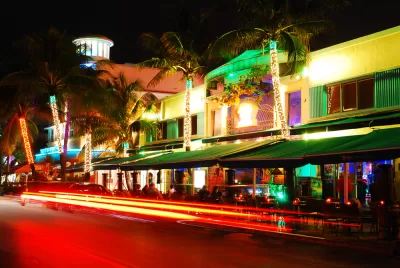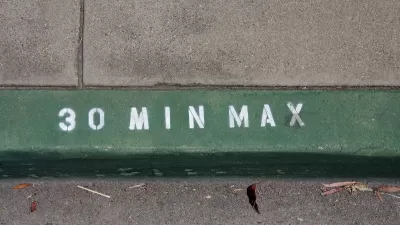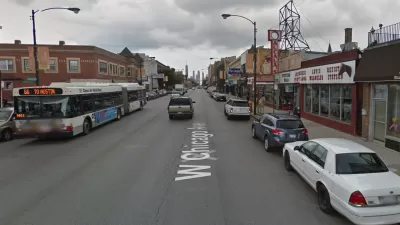Five panelists discussed the future of curbside parking and agree that there are technological and financial incentives to change priorities for these spaces.

A panel of transportation and logistics experts at the Vision Zero Cities Conference by Transportation Alternatives predicted continued and long-lasting changes in the way curbs, sidewalks, and curbside parking spaces are organized, managed, and prioritized. Since the incremental reopening of restaurants and other amenities since the onset of the coronavirus pandemic, space formerly dedicated to private vehicles is increasingly finding alternative uses.
But we have more than the coronavirus to thank for these shifting behaviors and innovations in the use of parking spaces. "That hopeful future might seem like a far-off dream for those who have sat through interminable community-board meetings where people have fought over the last inch of parking. But it’s probably achievable in the next 10 to 15 years — because technology and financial incentives will drive it," writes Eve Kessler, describing the panelists' insights.
Dynamic usage for curbside usage, according to the five panelists, will also make streets safer by reducing instances of vehicles stopping in bike lanes. The speakers heightened that technology could help drivers identify parking and avoid similarly dangerous situations. "Dawn Miller, head of policy and partnerships at the data firm Coord, said that mobile apps would soon direct deliverers — not just those in trucks, but also those in smaller vehicles — to available spaces in the last mile before a stop. Such precision would help eliminate hazards like parking in bike or bus lanes," reports Kessler.
Discussion about pricing for curb space is ongoing. Large delivery companies and small businesses alike stand to benefit from priced curb zones. "Pricing the curb would entail a balancing act for different users, the panelists agreed. Persons with disabilities, for example, should have complimentary access," Kessler writes.
FULL STORY: Vision Zero Cities: Experts Foresee Diverse Curbside Uses

Planetizen Federal Action Tracker
A weekly monitor of how Trump’s orders and actions are impacting planners and planning in America.

San Francisco's School District Spent $105M To Build Affordable Housing for Teachers — And That's Just the Beginning
SFUSD joins a growing list of school districts using their land holdings to address housing affordability challenges faced by their own employees.

The Tiny, Adorable $7,000 Car Turning Japan Onto EVs
The single seat Mibot charges from a regular plug as quickly as an iPad, and is about half the price of an average EV.

Seattle's Plan for Adopting Driverless Cars
Equity, safety, accessibility and affordability are front of mind as the city prepares for robotaxis and other autonomous vehicles.

As Trump Phases Out FEMA, Is It Time to Flee the Floodplains?
With less federal funding available for disaster relief efforts, the need to relocate at-risk communities is more urgent than ever.

With Protected Lanes, 460% More People Commute by Bike
For those needing more ammo, more data proving what we already knew is here.
Urban Design for Planners 1: Software Tools
This six-course series explores essential urban design concepts using open source software and equips planners with the tools they need to participate fully in the urban design process.
Planning for Universal Design
Learn the tools for implementing Universal Design in planning regulations.
Smith Gee Studio
City of Charlotte
City of Camden Redevelopment Agency
City of Astoria
Transportation Research & Education Center (TREC) at Portland State University
US High Speed Rail Association
City of Camden Redevelopment Agency
Municipality of Princeton (NJ)





























